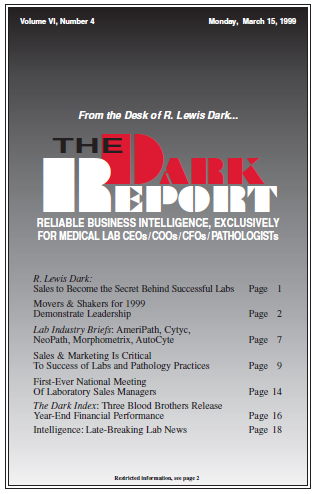FINANCIAL REPORTS RELEASED by the three national laboratories for the fiscal year 1998 reveal a definite improvement in their financial performance and cash flow. One sign of this improvement is the fact that none of the three blood brothers disclosed any huge write-downs similar to those experienced in 1995, 1996, and 1997. Another sign is …
Three Blood Brothers Release Year-End Financial Performance Read More »
To access this post, you must purchase The Dark Report.


